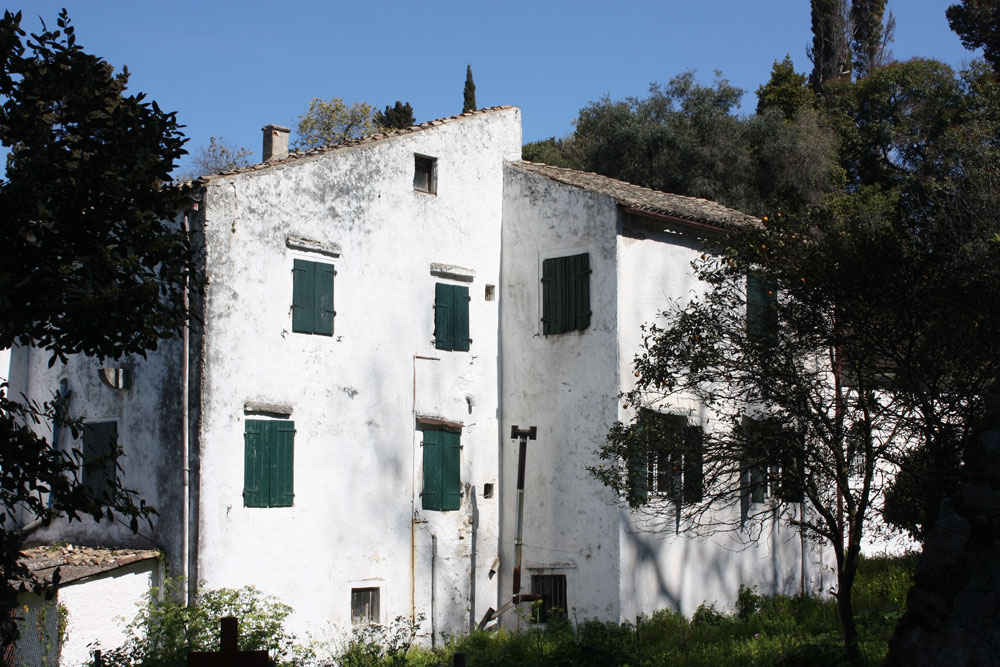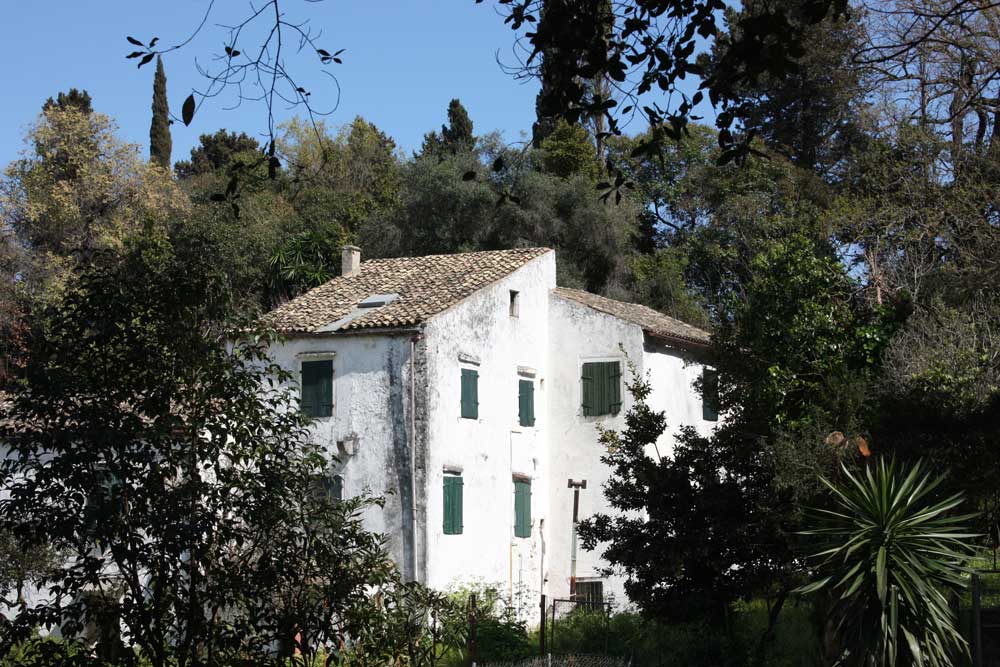The Monastery of Agia Efimia is hidden in these woodlands, next to the entrance of Mon Repo Palace. The monastery with the picturesque cells is one of the oldest nunneries on the island (mentioned in a document of 1478). It also owned large estates, as evidenced by 16th and 17th century contracts. In 1716 with the invasion of the Turks many documents were burned and destroyed and a large portion of the estates were expropriated.
The saved documentation states that, at the place where the katholikon of the monastery is built today, there was a much older church also dedicated to Agia Efimia as the icon of Agia was found in the ruins.
The oral tradition that has survived to this day states that the monastery was built during the 14th century by two married priests, after whose death their older widows dressed in habit and lived a solitary life in the Monastery of Agia Efimia. They were in fact related by marriage as they were mother-in-law and daughter in law. It is also mentioned that the discovery of the icon of Agia Efimia is due to them: one night the mother-in-law saw in her dream a girl with a white scarf on her head (this is how Agia Efimia is depicted in the old hagiography of the monastery), who pointed out the area where her image was buried. The mother-in-law told her daughter in law about her dream and together, in the ruins of an old temple, they found the icon of the Saint, hagiographed on a wall, which to this day is in the exact same place they found it, inside the current temple, in the northern part of the iconostasis.
The Monastery of Agia Efimia, although privately owned for many years, has always functioned as a convent, initially for the first monks and for the nuns today.
The katholikon of the monastery is a simple and small church of basilica style. It has a marble iconostasis, with the old fresco of Ag. Efimias, while to the south is an old fresco of Ag. Panteleimon.
A fragment of the Holy Relic of St. Efimias is kept on the sacred step of the katholikon. Efimias, is open for worship and blessing of the faithful twice a year on July 11 and September 16, days of celebration of the Monastery of Agia Efimia.
Despite difficulties, the monastery always maintained a spiritually active fraternity of nuns. In earlier times this fraternity had several members; in the middle of the 19th century 16 nuns are recorded. Today there are two remaining. The fraternity of the monastery has always had as its craft, what folklore mentions as the occupation of Agia Efimia, who as a young girl, was a seamstress, and worked on a loom. The sisters were also engaged in beekeeping, animal husbandry and the cultivation of the few olive groves of the Monastery of Agia Efimia.
Livestock farming and olive cultivation are still the main occupations of the small fraternity, while the loom is now preserved as a heirloom of the monastery.
Monastery of Agia Efimia, history
During the Venetian occupation, which did not recognize a separate orthodox ecclesiastical community, a number of other major legal problems arose. The monastery in terms of its legal status was privately owned. It belonged to a series of persons, who bequeathed it to their successors. The mentioned Antonios Mosoulis was one of the first owners of the monastery, while members of the Mosoulis family were successive owners until the end of the 16th century. The last owner of this family was the monk Savvas Mosoulis, who, due to his status, had no natural successors. However, at the time of his death, at the end of the 16th century, there was already a brotherhood of monks and an abbess in the monastery.
The summer villa of the English Commissioner was built in 1828-1832 on the borders of the Monastery of Agia Efimia towards the beach. This villa, now known as Mon Repo, with the union of the Ionian Islands with Greece in 1864, was granted for use by King George I, and until 1967 was used by the former royal family as a summer residence. This however created a new issue. King George wanted to expand the residential estate, so rented a large part of the monastery, greatly reducing the monastery’s size and turned it into a garden. With the change of government, the old royal property villa became property of the Greek state, who gave it to the local municipalities, so the rented property of the Monastery of Agia Efimia was given to the municipality and to this day is a common municipal space.
The monastery belonged to the church of Agios Panteleimon, which was located east of it and which was destroyed in 1799 in the war between the Russo-Turks and the French. From this temple its first name Mon Repo was derived, which was called casa di San Pantoleone. The Monastery of Agia Efimia also owned the well-known Vlacherna Monastery, located on an island in the bay of Kanoni.This iconic landmark is connected to the mainland by a very narrow strip of land, and today is perhaps the most famous and photographed attraction of Corfu. The monastery gave this share to the Holy Diocese of Corfu, and the nun who left there entered and settled in the fraternity of Ag. Efimias.
Source
ΣΟΥΡΤΖΙΝΟΣ, Γιώργος Χ. (2006). “Κέρκυρα: ταξίδι στο χρόνο“, Ιστορική – Λαογραφική Εταιρεία Κέρκυρας, γ’ έκδ., σελ. 93
Ιερά Μονή της Αγίας Ευφημίας, https://imcorfu.gr/ekklisies-mones/%CE%B9%CE%B5%CF%81%CE%AC-%CE%BC%CE%BF%CE%BD%CE%AE-%CF%84%CE%B7%CF%82-%CE%B1%CE%B3%CE%AF%CE%B1%CF%82-%CE%B5%CF%85%CF%86%CE%B7%CE%BC%CE%AF%CE%B1%CF%82/







Discussion